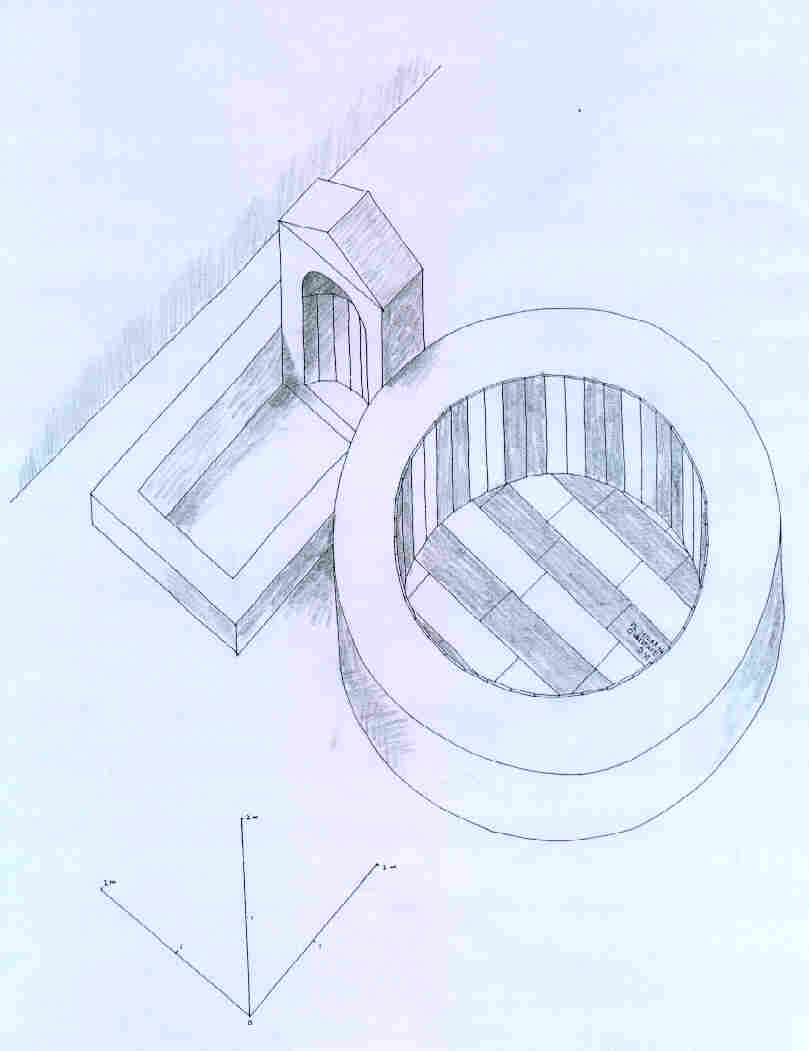| In the Early Church,
Mary was not a model for women but for all Christians.
In his ninth Christmas sermon, St.
Augustin wrote that just like Mary gave birth to Christ, so could the Church
give birth to Christians in baptism, and the Christian could give birth
to Christ through confessing Christian faith.
Proinde quia veritas et pax et
justitia Christus est,
hunc fide concipite, operibus
edite:
ut quod egit uterus Mariae in
carne Christi, agat cor vestrum in lege Christi.
Quomodo autem non ad partum Virginis
pertinetis, quando Christi membra estis?
Caput vestrum peperit Maria,
vos Ecclesia.
Nam ipsa quoque et mater et virgo
est:
mater visceribus charitatis,
virgo integritate fidei et pietatis.
Populos parit, sed unius membra
sunt, cuius ipsa est corpus et conjux. |
Christ is truth, peace and justice.
Concieve him in faith and give birth
to him in your actions.
In this way, your heart will do
in the Law of Christ what the womb of Mary did in the flesh of Christ.
The childbirth of Mary concerns
you, because you are the body of Christ.
Mary gave birth to your head,
the Church gave birth to you.
Also the Church is mother and virgin.
She is mother through love,
virgin through the integrity of
her faith and her piety.
She gives birth to entire peoples
in order to make them limbs of the head, whose body and bride she is. |
(Sermo 192,2, PL 38,
1012).
In his eighth Christmas sermon, St.
Augustin told the Christians to do in their soul what they admired in the
flesh of Mary, i. e. concieve Christ.
| Quod miramini in carne Mariae,
agite in penetralibus animae. Qui corde credit ad justitiam, concipit Christum;
qui ore confitetur ad salutem (Rom 10,10), parit Christum. |
Do in your soul what you admire
in the flesh of Mary.
Through faith you concieve Christ,
and through confessing Christian
faith (Rom 10:10), you give birth to Christ. |
(Sermo 191,4, PL 38, 1011.)
The recently excavated fifth century
baptistery in San Lorenzo in Lucina offers an occasion to meditate on the
rites of baptism, which was celebrated in this baptistery
during the Vigils of Easter and Pentecost.
 The
most particular feature of this baptistery is the rectangular lateral basin,
which perhaps was used for the blessing of the water before the baptism.
For this reason, we borrow a meditation from the Roman prayer for the blessing
of the water for the baptism of Easter baptism in the Sacramentarium
gelasianum antiquum, one of the most important sources of knowledge
about the liturgy of Rome. The
most particular feature of this baptistery is the rectangular lateral basin,
which perhaps was used for the blessing of the water before the baptism.
For this reason, we borrow a meditation from the Roman prayer for the blessing
of the water for the baptism of Easter baptism in the Sacramentarium
gelasianum antiquum, one of the most important sources of knowledge
about the liturgy of Rome.
This ancient baptismal prayer
describes the fertility of the Holy Spirit and of the virginal womb of
the Church. The prayer is known to us from a ms. from around
750 but may have been written already in the fifth century. This text was
perhaps recited in front of the rectangular basin, or in front of the circular
one:
Domine...fontem..baptismatis
aperis toto orbe terrarum gentibus innovandis,
ut tuae maiestatis imperio sumat
unigeniti tui gratiam de spiritu sancto.
Qui hanc aquam regenerandis hominibus
praparatum archano sui luminis admixtione fecundet,
ut sanctificatione concepta ab
immaculato divini fontis utero in novam renatam creaturam progenies caelestis
emergat,
et quos aut sexus in corpore
aut aetas discernit in tempore, omnis in una pareat gratia mater infantia. |
O Lord, you open up the font for
the renewal of all nations of the world that they may receive grace of
your only Son by the Holy Spirit at the command of your majesty.
Let the Holy Spirit, by the hidden
admixture of his light, give fruitfulness to this water prepared for the
rebirth of humankind,
that, with sanctification concieved
in it, a heavenly offspring may come forth from the virginal womb of the
divine font,
and that grace may be a mother to
people of every age and sex, who are born into a common infancy. |
The text: The text in Liber sacramentorum
Romanae aecclesiae ordinis anni circuli (Cod. Vat. Reg. lat. 316/Paris
Bibl. Nat. 7193, 41/56) (Sacramentarium gelasianum), herausgegeben
von L. C. Mohlberg, Roma 1960, 72-73.
See also: Antoine Chavasse, Textes
liturgiques de l'Église de Rome. Le cycle liturgique romain annuel
selon le sacramentaire du Vaticanus Reginensis 316 (Sources liturgiques
2), Paris 1997.
Would you like to know the exact
date of Easter baptism in the any year after 325? Check the site "Calculation
of the Ecclesiastical Calendar" by Marcos J. Montes. Enter a year after
325 CE and a script will calculate the day of the Easter in the Western
and Eastern Traditions, the movable feasts, and other significant liturgical
celebrations. |
